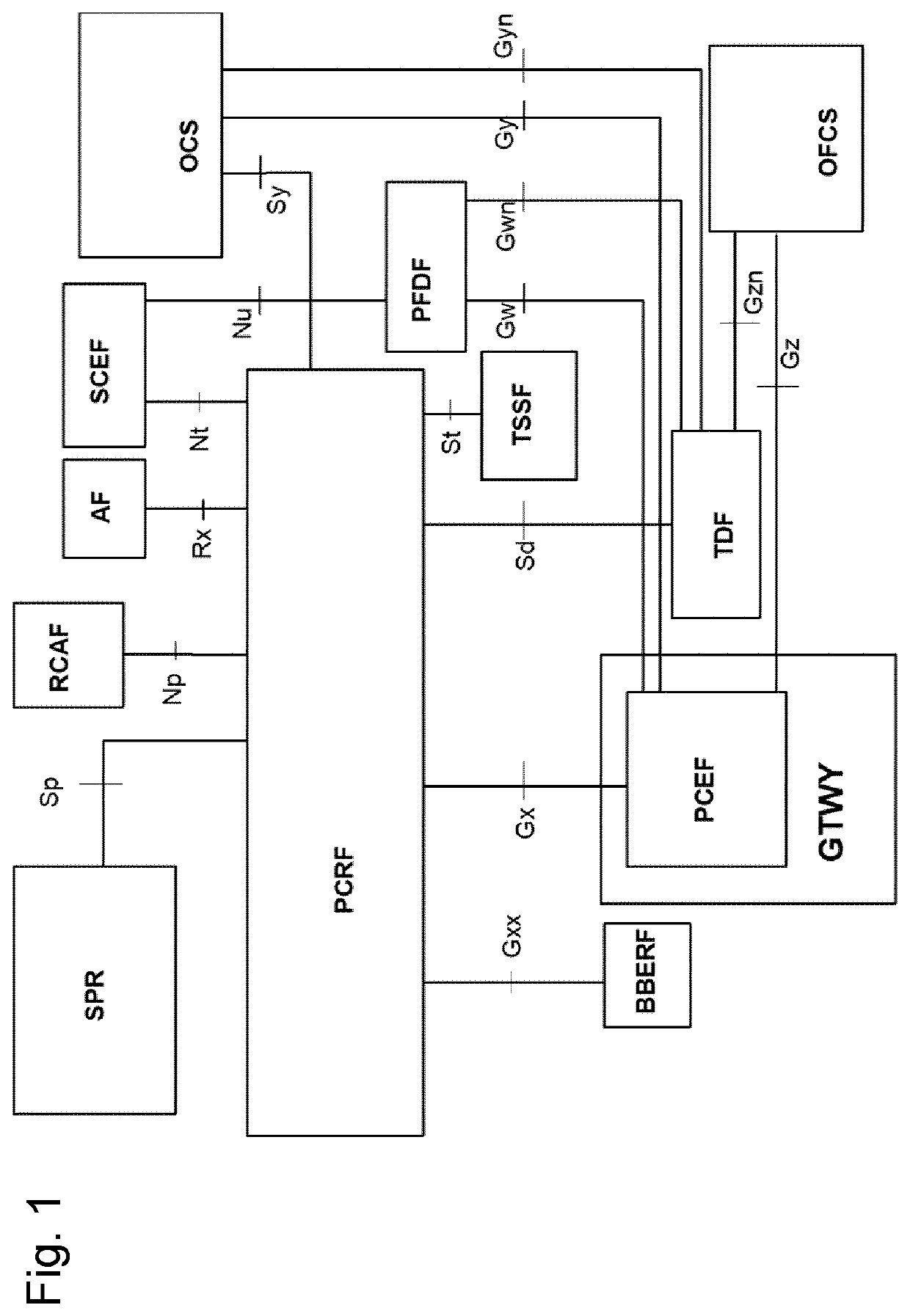Facilitating real-time transport of data streams
- Summary
- Abstract
- Description
- Claims
- Application Information
AI Technical Summary
Benefits of technology
Problems solved by technology
Method used
Image
Examples
example 1
[0222] An example of an endpoint data structure in JSON format, with three endpoints “e1”, “e2”, and “e3” and where and points “e1” and “e2” belong to the same client “c1” and where endpoint “e3” is making use of a TURN server, is given below:
{ “endpoints”: [{ “id”: “e1”, “client”: “c1”, “address”: “250.142.4.116”, “port”: “UDP / 49153” }, { “id”: “e2”, “client”: “c1”, “address”: “250.142.4.116”, “port”: “UDP / 49268” }, { “id”: “e3”, “client”: “c2”, “address”: “233.85.25.238”, “port”: “TCP / 56213” “relay”: { “address”: “128.66.222.55”, “port”: “TCP / 61172” } }] }
[0223]The information for the currently active streams may include:[0224]Application level stream identifier,[0225]Application level endpoint identifier of the sender[0226]List of application level endpoints of the receivers[0227]Network service requirements (e.g., minimum required bandwidth or maximum latency).
[0228]The number of senders may be limited...
example 3
[0249] An example of the data structure for agreements between a network operator or CSP and a third-party WebRTC service in JSON format, with two agreements for networks “n1”, and “n2”, where the agreement for “n1” is specific on per-flow basis and the agreement for “n2” is specified on the basis of a maximum aggregated maximum, is:
{ “agreements”: [{ “network”: “n1”, “endpoints”: [“e1, e2”], “qos”: { “uplink”: { “stream-bw”: XX, “max-stream-bw”: XX, }, “downlink”: { “stream-bw”: XX, “max-stream-bw”: XX, } },{ “network”: “n2”, “endpoints”: [“e3”], “qos”: { “uplink”: { “aggr-bw ”: XX, “max-aggr-bw”: XX }, “downlink”: { “aggr-bw ”: XX, “max-aggr-bw”: XX } }] }
Application Interface
[0250]The SMGF may provide (e.g., ‘expose’) an API to the WebRTC SFU for specifying the service requirements. The API may, for example, include the fo...
example 6
[0259] An example of the use of this function is:
[0260]endpoint remove (“e3”)[0261]client_add, this may be a convenience function that may be used by the WebRTC SFU to add multiple endpoints associated to a single client to the list of endpoints maintained in the SMGF. Using this function multiple times with the same client identifier may: (1) add all endpoints that do not yet exists in the list of endpoints maintained by the SMGF, (2) when the update flag is set, update all endpoints that do exists in the list of endpoints maintained by the SMGF, and (3) when the cleanup flag is set, remove all endpoints that do exists in the list of endpoints maintained by the SMGF but are not specified in the function call.
[0262]Example 7. An example of the use of this function, where a client with identifier “c1”, two endpoints, the update flag set, and the cleanup flag no set, is:
[0263]client add(“c1”, endpoints, true, false)
[0264]where endpoints may be an object with the following data structu...
PUM
 Login to View More
Login to View More Abstract
Description
Claims
Application Information
 Login to View More
Login to View More - R&D
- Intellectual Property
- Life Sciences
- Materials
- Tech Scout
- Unparalleled Data Quality
- Higher Quality Content
- 60% Fewer Hallucinations
Browse by: Latest US Patents, China's latest patents, Technical Efficacy Thesaurus, Application Domain, Technology Topic, Popular Technical Reports.
© 2025 PatSnap. All rights reserved.Legal|Privacy policy|Modern Slavery Act Transparency Statement|Sitemap|About US| Contact US: help@patsnap.com



